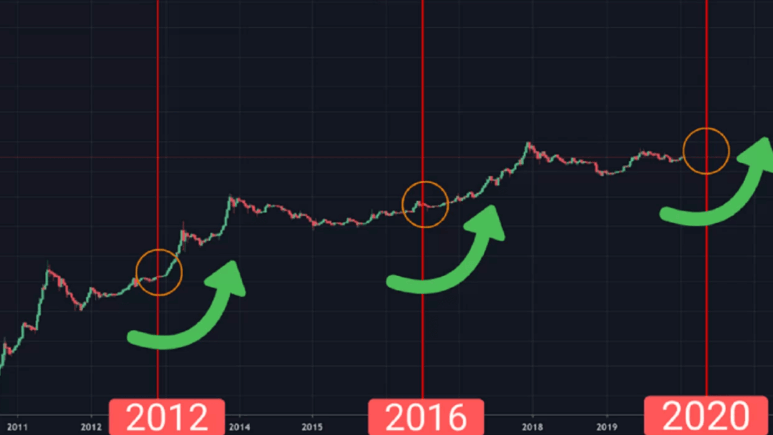The Role of BTC Halving in Price Increases: Explained

Bitcoin (BTC), the world’s most famous cryptocurrency, has garnered significant attention for its price fluctuations. One event that has historically played a crucial role in Btc price movements is the halving event. Bitcoin halving is a well-known feature of the cryptocurrency’s supply schedule, and it has a profound impact on its price. This article will explore the mechanics of BTC halving and how it has influenced price increases throughout its history.
What is Bitcoin Halving?
Bitcoin halving refers to the process by which the reward for mining new blocks is reduced by half. This event occurs approximately every four years, or after every 210,000 blocks are mined. Halving is an essential part of Bitcoin’s monetary policy, which ensures that the total supply of Bitcoin is capped at 21 million coins. As a result, Bitcoin halving reduces the rate at which new coins are introduced into circulation, thus making the cryptocurrency scarcer.
The Bitcoin Supply Model: Why Halving Matters
Bitcoin operates on a deflationary model. The total number of bitcoins that can ever exist is fixed at 21 million. The mining reward — the reward miners receive for verifying and adding new blocks to the blockchain — initially began at 50 BTC per block. However, after every halving event, the reward is halved, making the creation of new bitcoins increasingly rare.
The scarcity caused by halving often increases demand, which, in turn, has historically been associated with higher Bitcoin prices. But is this always the case? Let’s examine how past halvings have impacted Bitcoin’s price.
Bitcoin Halving Timeline and Historical Price Trends
The First Bitcoin Halving: November 28, 2012
The first Bitcoin halving took place on November 28, 2012, when the mining reward dropped from 50 BTC to 25 BTC. Prior to this halving, Bitcoin was already beginning to gain attention, but it wasn’t as widely recognized as it is today. In the months following the halving, Bitcoin’s price began a steady rise, which culminated in the cryptocurrency reaching $1,100 per coin in late 2013. This was a major milestone for Bitcoin, demonstrating the potential for significant price increases after halving events.
The Second Bitcoin Halving: July 9, 2016
The second Bitcoin halving took place on July 9, 2016, reducing the reward from 25 BTC to 12.5 BTC. Similar to the first halving, Bitcoin’s price experienced a significant rally after the event. Between the second halving and the peak of the 2017 bull market, Bitcoin’s price soared to nearly $20,000 in December 2017. This marked the first time Bitcoin entered mainstream consciousness, largely driven by the scarcity introduced by the halving and the increase in demand.
The Third Bitcoin Halving: May 11, 2020
The most recent Bitcoin halving took place on May 11, 2020, when the reward dropped from 12.5 BTC to 6.25 BTC. Following this halving, Bitcoin’s price experienced a rapid increase, reaching new all-time highs in 2021. By April 2021, Bitcoin’s price surpassed $60,000, driven by institutional adoption, broader mainstream awareness, and the continued scarcity of Bitcoin due to the halving event.
Why Does Bitcoin Halving Impact Price?
Reduction in Supply: A Core Factor in Price Movements
At the heart of Bitcoin halving’s price effect is the simple economic principle of supply and demand. By reducing the number of new bitcoins entering circulation, halving events create scarcity. In a market where demand remains constant or increases, reduced supply typically results in higher prices.
The scarcity effect is particularly powerful in Bitcoin because it is a deflationary asset with a fixed supply. The ongoing halving events ensure that Bitcoin’s supply curve continues to tighten over time, making it more desirable to investors, both retail and institutional.
Investor Behavior and Speculation
The anticipation of halving events often leads to increased buying behavior in the months leading up to the event. This is driven by the expectation that reduced supply will lead to a price increase. Traders and investors often buy Bitcoin before the halving event in the hopes of capitalizing on the post-halving price surge.
Moreover, Bitcoin halvings are widely publicized events that attract media attention, increasing investor interest and contributing to speculative price rises. The combination of lower supply and higher demand naturally drives prices upward, particularly during periods of hype. This increased attention often leads to new investors exploring how to convert sats to usd, further fueling market activity.
The Psychological Impact of Halving Events
Scarcity and Its Psychological Effect on Investors
Human psychology plays a significant role in financial markets, and Bitcoin’s fixed supply and the predictable halving cycle often trigger psychological responses from investors. As the number of available coins decreases over time, investors may feel a sense of urgency to buy Bitcoin before it becomes even scarcer, further driving up demand.
This psychological phenomenon can create self-fulfilling prophecies. As more people believe Bitcoin’s price will increase due to halving, more people buy, thereby pushing the price up. This circular dynamic can lead to a feedback loop where the expectations of higher prices contribute to the actual increase in prices.
Media and Public Perception
Bitcoin halving events often receive significant media coverage, which can amplify the effects of scarcity. The more people that are made aware of the halving, the more potential buyers there are. Media attention tends to increase the public’s interest, leading to more individuals entering the market and further increasing demand. When combined with the psychology of scarcity, the media plays a pivotal role in fueling price increases.
What Does the Future Hold for Bitcoin Halving and Price Increases?
The Impact of Institutional Investment
As Bitcoin becomes more widely accepted, institutional investors are likely to continue playing a larger role in driving up its price. Bitcoin halvings may continue to have a similar effect on prices, but with institutional players more involved, the market may behave differently than in the past. Large players with deep pockets could reduce some of the volatility traditionally associated with BTC halvings.
The Impact of Global Economic Factors
The future impact of halving events on Bitcoin’s price will also depend on broader economic factors. For example, the state of the global economy, inflation rates, and the adoption of Bitcoin as a hedge against inflation could all influence the price dynamics after a halving event. If demand for Bitcoin as a store of value continues to increase, future halvings may have an even more significant impact on price.
Common Myths About Bitcoin Halving and Price Increases
Myth #1: Bitcoin’s Price Will Always Increase After Halving
While historical data suggests that Bitcoin’s price has tended to rise after halvings, this is not guaranteed. The market is influenced by a variety of factors, and halving is just one of them. Other factors such as regulatory changes, global economic conditions, and market sentiment can impact Bitcoin’s price trajectory.
Myth #2: Halving Alone Drives Bitcoin’s Price
Although halving events are significant, they are not the sole driver of Bitcoin’s price. Many factors contribute to Bitcoin’s value, including technological developments, adoption by businesses and institutions, and overall market sentiment. Halving events act as a catalyst, but they are not the only determining factor.
Frequently Asked Questions (FAQs)
1. How often does Bitcoin halving occur?
Bitcoin halving occurs approximately every four years or after every 210,000 blocks are mined.
2. How does Bitcoin halving affect its price?
Bitcoin halving typically reduces the supply of new coins, creating scarcity. In the past, this has often led to an increase in demand and, consequently, an increase in price.
3. Is Bitcoin halving the only factor affecting its price?
No, Bitcoin’s price is influenced by many factors, including investor sentiment, regulatory developments, technological advancements, and macroeconomic conditions.
4. Can Bitcoin’s price continue to rise after the next halving?
While there’s no guarantee, the past halvings have been followed by price increases. However, future price movements will depend on several variables, including demand, institutional involvement, and global economic factors.
5. How does halving affect Bitcoin miners?
After each halving, miners receive fewer bitcoins as a reward for verifying transactions. This can make mining less profitable, especially if the price of Bitcoin doesn’t increase sufficiently to offset the reduced reward.
6. What’s the long-term impact of Bitcoin halving?
Over the long term, halvings ensure that Bitcoin’s supply remains limited, which may increase its scarcity and value. This deflationary model could help Bitcoin maintain its position as a store of value and hedge against inflation.
Conclusion
Bitcoin halving is a significant event in the world of cryptocurrency. It reduces the rate at which new bitcoins are created, thereby creating scarcity and influencing demand. Historically, halvings have been associated with price increases, but many other factors contribute to Bitcoin’s price movements. As we look ahead, the continued effects of Bitcoin halving events will depend on broader economic trends and the evolving role of institutional investors. Regardless of these uncertainties, Bitcoin halving remains a key moment for traders, investors, and the wider crypto community.



![Integrating FLUX.1 Kontext [dev], Designated Background Change, Unlimited Creativity](https://topfranceturf.org/wp-content/uploads/2025/07/3-1-390x220.png)

